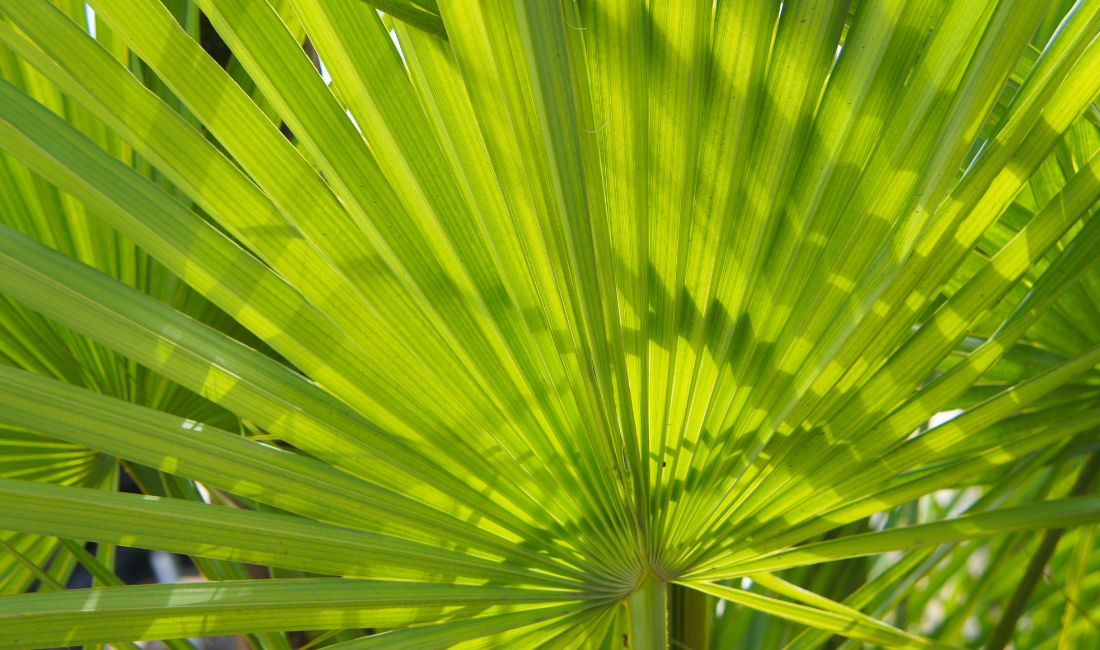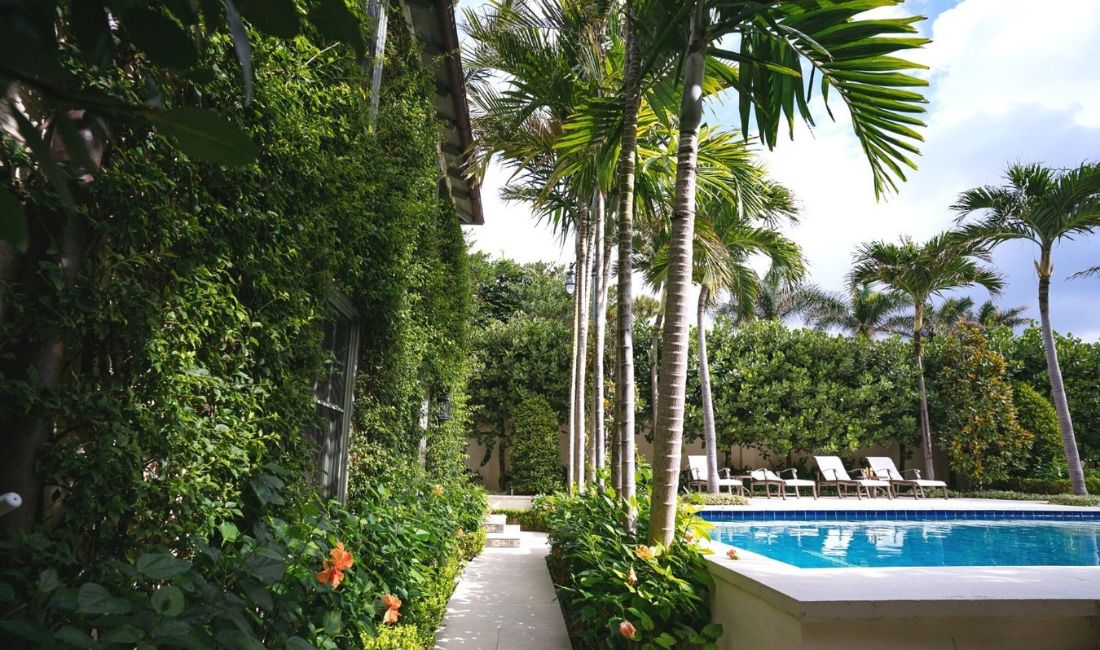Palm Beach is known for many things, but its name naturally brings one thing to mind: palms.
Both native and non-native palms are found throughout Florida and Palm Beach in particular. With so many options, it can be difficult to know which are best for your palm tree property.
In this article, we cover some of the best palms for your palm beach property, as well as some things to think about before choosing to plant a palm on your property.

Florida’s Native Palms
Did you know that only twelve palms are native to our state? Of all the thousands of varieties grown here, most were imported from other locations.
The Florida native palms are:
- Needle palm (Rhapidophyllum hystrix)
- Saw palmetto (Serenoa repens)
- Dwarf palmetto (Sabal minor)
- Cabbage or Sabal palm (also the state tree!) (Sabal palmetto)
- Scrub palmetto (Sabal etonia)
- Miami palm (sabal miamiensis)
- Florida silver palm (Coccothrinax argentata)
- Buccaneer palm (Pseudophoenix sargentii)
- Key thatch palm (Leucothrinax morrisii)
- Florida thatch palm (Thrinax radiata)
- Paurotis or Everglades palm (Acoelorrhaphe wrightii)
- Florida royal palm (Roystonea regia)
Click on any of the palm tree names above to learn more about our native palms.

Why is Palm Beach Named After Palms?
Palm Beach, which previously went by several other names, received its current name because of a shipwreck. In 1878, a ship called the Providencia was traveling from Havana to Spain when it was shipwrecked. It’s estimated that there were around 20,000 coconuts on board the ship, harvested in Trinidad and Tobago. Locals and shipwreck survivors planted the coconuts, hoping to sell the crops, and the many palms eventually gave the location its name.
Thanks to the onslaught of invasive plants in Florida, we recommend planting native trees and plants whenever possible. However, there may be other considerations when choosing the right palm for your property.
Choose the Right Palm for the Right Place
Just as we encourage you to choose the right tree for the right place on your property, palms need to be planted in the correct spot to ensure their health and longevity.
Before choosing which palm to plant, consider things such as:
- the location and the sun it receives,
- how much room there is for a palm to grow,
- any fruit or fronds that may be dropped by the palm,
- what kind of ongoing maintenance it may require,
- and the type of soil, amount of moisture, type of weather, and exposure to salt that the palm may receive in that spot.
Planting the right palm in the right spot can save lots of time, money, and hassle in the future. We cover some of the most common areas to consider when adding a palm to your Palm Beach property below.

Considerations for Palms on Beachfront Properties
As we mentioned in our article on the best plants for Palm Beach coastal landscapes, planting on a beachfront property means considering the sand, sun, salt, heat, and storms. Each of those variables can impact the health and longevity of your palms.
If your property is on the beach, you may want to consider palms that are salt and drought-tolerant such as:
- Seashore palm (Allagoptera arenaria)
- Canary date palm (Phoenix canariensis)
If drought isn’t as much of a concern, you may want to focus on palms that are salt-tolerant, such as:
- Cabbage palm (Sabal palmetto)
- Saw palmetto (Serenoa repens)
- Washington or fan palm (Washingtonia robusta)
Beachfront properties often receive the brunt of many tropical storms. While proper pruning and maintenance can help prevent some storm damage, Sabal palms are known for their resistance to hurricane damage.
Again, native plants and trees (including palms) are more adapted to our climate, so they are often the best choice when choosing what palms to plant on your Palm Beach property.
Palms that Need Full Sun
Many palms require full sun to grow and thrive. If you’re looking for palms in a location that will receive full sun, you may consider those such as:
- African oil palm (Elaeis guineensis)
- Buccaneer palm (Pseudophoenix sargentii)
- Needle palm (Rhapidophyllum hystrix)
- Sylvester palm, silver date palm, sugar date palm, wild date palm (Phoenix sylvestris)
As many palms grow quite tall, most of those palms will require full sun. If you think of palms in nature, the taller palms were the ones that would receive sun while smaller palms, plants, and ferns would grow under the tall palms.
Palms for the Shade
While most palms prefer sunny locations, there are some palms that will do well, and may even thrive, in shady or partly shady spots on your Palm Beach property. They include:
- Lady palm (Rhapis excelsa)
- Parlor palm (Chamaedorea elegans)
- Red sealing wax palm, lipstick palm (Cyrtostachys renda)
Palms that do well in the shade tend to be smaller, as they would naturally grow under trees or palms that provide shade.

Poolside Palms
Whether you’re looking to add some shade around your pool area or you just want a tropical feel, poolside palms are in a category of their own. They can range in size and sunlight requirements, so be sure to take into account your property’s unique needs and requirements.
Different areas of your yard will have different soil, sunlight, wind exposure, and more. Some poolside palms may also be exposed to chlorine, and others may drop leaves or fruit, so keep that in mind when choosing the right one for your pool area.
- Buccaneer palm (Pseudophoenix sargentii)
- Montgomery palm (Veitchia montgomeryana)
Smaller Palms
When you have limited space to plant a palm, you’ll want to look at smaller varieties. You should still research the maximum height and width that a palm will grow, however, as some spaces will still be too small for them to grow comfortably. Here are some options for palms that work in smaller spaces:
- European fan palm, Mediterranean fan palm (Chamaerops humilis)
- Dwarf palmetto (Sabal minor)
- Pygmy date palm (Phoenix roebelenii)
- Saw palmetto (Serenoa repens)
Smaller palms can be planted in the ground or some may work well grown in a container. Check out the specific type of palm and its planting requirements to see its growing and planting requirements.
Consider Whether a Palm or a Tree is the Best Option
While palms in Palm Beach seem like an obvious choice, keep in mind that palms are not actually trees, and therefore don’t provide as many of the benefits that trees provide. If you’re looking to reduce the air temperature, provide shade, and benefit local wildlife, there are instances where a tree might be a better option than a palm.
Non-native palms, in particular, can do little to support our ecosystem. The University of Florida has studied 20 non-native palm species and while they aren’t all considered invasive, these six palms are considered concerning:
- Coconut palm (Cocos nucifera)
- Queen palm (Syagrus romanzoffiana)
- Washington palm (Washingtonia robusta)
- Solitary palm (Ptychosperma elegans)
- Senegal date palm (Phoenix reclinate)
- Chinese fan palm, fountain palm (Livistona chinensis)
Click on any of the palm names above to learn why they may not be the best choice for your property.
You can read more about why you may want to choose to plant a native palm (or a tree) in this article called, “The Problem with Florida Palm Trees.”

Palm Issues
Just as any other plant, palms have their own pests, diseases, and other issues to contend with. When choosing a palm for your property, it’s best to know these potential difficulties beforehand.
Some issues can affect any palm, such as Ganoderma palm disease or over pruning, while others impact only specific types of palms.
To learn more about some problems that palms may face, read this article on Sherlock Tree’s website on palm pests, diseases, and environmental issues.
Coastal Gardens Professionals Can Help You Choose the Best Palm or Tree for Your Property
With so many variables and options when it comes to choosing a palm or tree for your Palm Beach property, it can be overwhelming to choose the best one for you. If that’s the case, the professionals at Coastal Gardens are here to help! We have a wealth of knowledge in both trees and palms and can help you determine which would work best for your property’s needs.
Contact us today to schedule a consultation.
CALL US TODAY At 561-308-7604
Estate landscape Services
For Fine Properties in Palm Beach
With Coastal Gardens, you can rest easy knowing that your property is taken care of by a dedicated team of estate landscape professionals who truly care about creating and maintaining a dazzling outdoor space you can be proud of.
